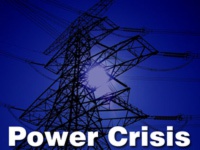
Accra, Oct. 30, GNA - Twenty-five to 30 per cent of the about 1,400 megawatts of electric power generated in the country go waste, Ms. Abla Fiadjoe, the Acting Director, Corporate Services of the Volta River Authority (VRA) told the Ghana News Agency (GNA) on Monday.
She said the (VRA), the main energy producer in the country had attributed the reason largely to inefficient use and high energy consuming appliances, which had flooded the Ghanaian market.
Ms. Fladjoe explained that the attitude and behaviour of consumers to energy usage largely impacted on the demand for power and therefore VRA's activities in the country.
"The moment lights are switch on and other appliances put to use with the aid of electricity, the power generating machines of the VRA automatically adjust, which reduces the water level of the Akosombo Dam," she said.
She said the current energy demand had more than doubled to about 10 per cent growth per annum since the early 1990s but little had been done to expand or increase the infrastructure base.
"The VRA is not breaking-even for the cost of generating and transmitting power but there is the need to also ensure that we extend our facilities to keep pace with the growth in demand," she said.
In terms of cost, Ms Fladjoe said the waste could not be under-estimated since about half the cost of generation and transmission of power by the VRA and the Electricity Company of Ghana could not be recovered.
On energy conservation, she said the typical Ghanaian expects heat and light at the flick of a switch and demands machines that wash clothes and dishes, vacuum the floors and keep the food fresh or frozen. But she said, 93lots of little things could make a major impact on the energy resources we gobble up daily=94.
Saving energy, Ms Fladjoe said, needed not be involved with a huge amount of efforts on the part of the individual but simply a matter of remembering to make a few easy changes that would add up to making a big difference in the overall amount of energy consumed.
Accra, Oct. 30, GNA - Twenty-five to 30 per cent of the about 1,400 megawatts of electric power generated in the country go waste, Ms. Abla Fiadjoe, the Acting Director, Corporate Services of the Volta River Authority (VRA) told the Ghana News Agency (GNA) on Monday.
She said the (VRA), the main energy producer in the country had attributed the reason largely to inefficient use and high energy consuming appliances, which had flooded the Ghanaian market.
Ms. Fladjoe explained that the attitude and behaviour of consumers to energy usage largely impacted on the demand for power and therefore VRA's activities in the country.
"The moment lights are switch on and other appliances put to use with the aid of electricity, the power generating machines of the VRA automatically adjust, which reduces the water level of the Akosombo Dam," she said.
She said the current energy demand had more than doubled to about 10 per cent growth per annum since the early 1990s but little had been done to expand or increase the infrastructure base.
"The VRA is not breaking-even for the cost of generating and transmitting power but there is the need to also ensure that we extend our facilities to keep pace with the growth in demand," she said.
In terms of cost, Ms Fladjoe said the waste could not be under-estimated since about half the cost of generation and transmission of power by the VRA and the Electricity Company of Ghana could not be recovered.
On energy conservation, she said the typical Ghanaian expects heat and light at the flick of a switch and demands machines that wash clothes and dishes, vacuum the floors and keep the food fresh or frozen. But she said, 93lots of little things could make a major impact on the energy resources we gobble up daily=94.
Saving energy, Ms Fladjoe said, needed not be involved with a huge amount of efforts on the part of the individual but simply a matter of remembering to make a few easy changes that would add up to making a big difference in the overall amount of energy consumed.